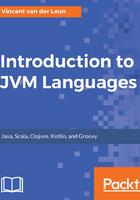
Build tools
Back when projects were simpler, simple batch or operating system shell script files used to automate the compiling and packaging process. As projects became more complex, it became harder to define these scripts. For different operating systems, completely different scripts had to be written.
Soon, the first set of dedicated Java build tools appeared. These worked with XML build files. More or less, cross-platform compatible scripts could be written this way. At first, long and cumbersome scripts had to be written; later, tools worked with the convention over configuration paradigm. When using the conventions suggested by the tool, much less code has to be written; however, if your situation is different from the default behavior, it can take a lot of effort to let the tools do what you want or need. Newer tools ditch XML files and provide script languages to automate the building.
Some of the features that many of those tools offer are as follows:
- Built-in dependency managers that can download add-on libraries from well-known repositories from the Internet
- Automatically run unit tests and conditionally stop packaging if a test fails
The JDK does not offer a build tool itself, but it will be hard to find projects that do not at least use one of the following open source build automation tools:
- Apache Ant (has no built-in dependency manager and works with XML-based build scripts)
- Apache Maven (introduced convention over configuration with XML files and works with plugins)
- Gradle (build scripts written in Groovy or Kotlin)
JVM programmers that use a popular IDE do not have to worry too much about build automation tools. This is because all IDEs can generate build scripts themselves. If you want more control, you can start writing your own scripts manually and let the IDE use that script to compile, test, and run your project.